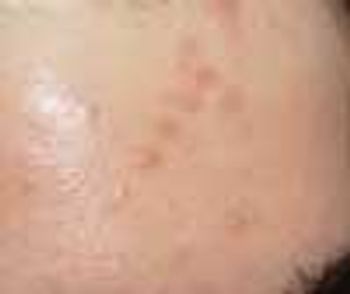
It isn't just about skin: Atopic dermatitis affects a child's psyche. To keep the disease under control, prescribe sufficient topical corticosteroids and administer a generous dosage of reassurance.

It isn't just about skin: Atopic dermatitis affects a child's psyche. To keep the disease under control, prescribe sufficient topical corticosteroids and administer a generous dosage of reassurance.

The authors take a case-based look at 10 immune disorders, and review when to suspect a primary immunodeficiency in a child with frequent infections and how to confirm the diagnosis.

A toddler was brought to the emergency department with a 3-day history of a rash on her neck and irritability and fever (temperature, 38.3°C [101°F]) of 1 day's duration. The child's mother noticed a red, purulent bump on the girl's hand 2 days before the rash developed.

After several days of suffering fever, headache, and malaise, a 17-year-old boy noticed a rash developing over much of his body. He sought medical attention and was admitted to the hospital.

A physician who practiced amid an outbreak of smallpox reviews the immunization procedure and complications.

A physician who practiced amid an outbreak of smallpox reviews the immunization procedure and complications.

Smallpox has re-emerged--not yet as a disease but as a subject of apprehension, debate, and misunderstanding. Here, an expert reviews the disease, vaccine, and proposed immunization strategies.

A 14-year-old girl is brought to you complaining of an itchy red rash on her back. The rash appeared four months ago as a scaly red bump and enlarged over several weeks in an annular pattern to cover a large area.

You are asked to evaluate an 8-year-old boy who recently developed white rings around moles on his neck and back. Although he complains of slight itching, you don't see signs of scratching.

All cutaneous and mucosal surfaces can fall prey to fungi such as dermatophytes and yeasts. Here's how to recognize superficial fungal infections and initiate treatment.

The preparticipation examination of these young athletes must address some important concerns beyond those of the usual PPE.


A baby who is wheezing but in no apparent respiratory distress and a nasal antigen test positive for respiratory syncytial virus. What to do? Or, perhaps more important, what not to do?

Self-healing reticulohistiocytosis

Children with epilepsy can usually achieve seizure control, but not always with the first medication prescribed. General pediatricians can learn from a child neurologist&s approach to this problem.

Faced with a child who has been exposed to mercury, would you recognize the signs and symptoms? Would you know what questions to ask, which lab tests to draw, and what treatment to initiate?

Tattoos and body piercing have caught on as teenage, and even preteen, fashion statements. Here&s how to help your patients avoid the pitfalls of this form of self-expression.

Multiple tender red papules on the trunk

Pediatricians must know how to differentiate worrisome moles from benign ones, identify children at risk, and educate families about sun protection.



The term food allergy is often applied to adverse reactions that are not immunologic responses to food. This practical guide describes true hypersensitivity reactions and how to diagnose them.

Lumps in children that cause pain have six basic causes. Here's how to differentiate among them and determine which require further investigation.

Skin eruption on a 9-year-old

Summaries from the literature with comments by Dr. Burke